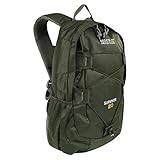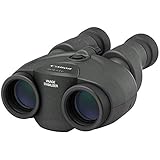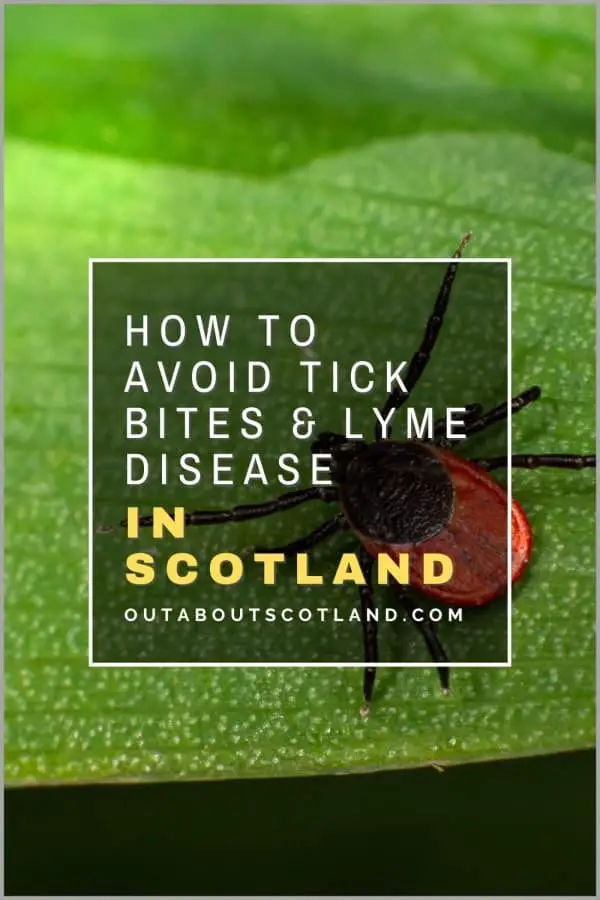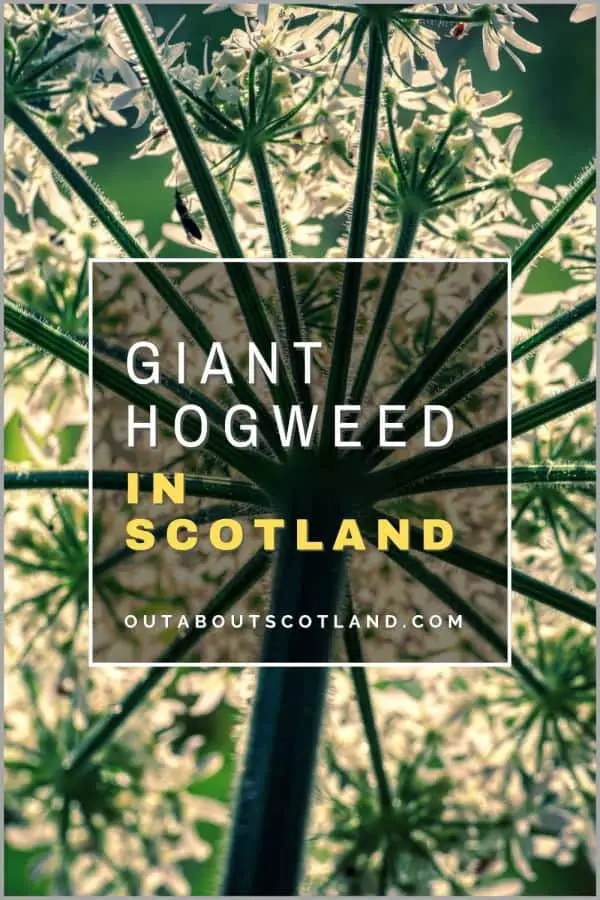Scotland is a great place to take a break. The country welcomes around 151 million visitors each year, and it’s easy to see why. There are scenic walks, thousands of historic attractions, treks into the wilds of the Scottish Highlands, and day trips into the city delights of Edinburgh and Glasgow.
However, it’s important to know what to pack for Scotland in order to make the most of a visit to this amazing country. As someone who travels extensively around Scotland, I have a pretty good idea of the clothes and accessories needed for a sightseeing tour, so with that in mind, I’ve put together the following packing list that covers all the essentials you’ll need.
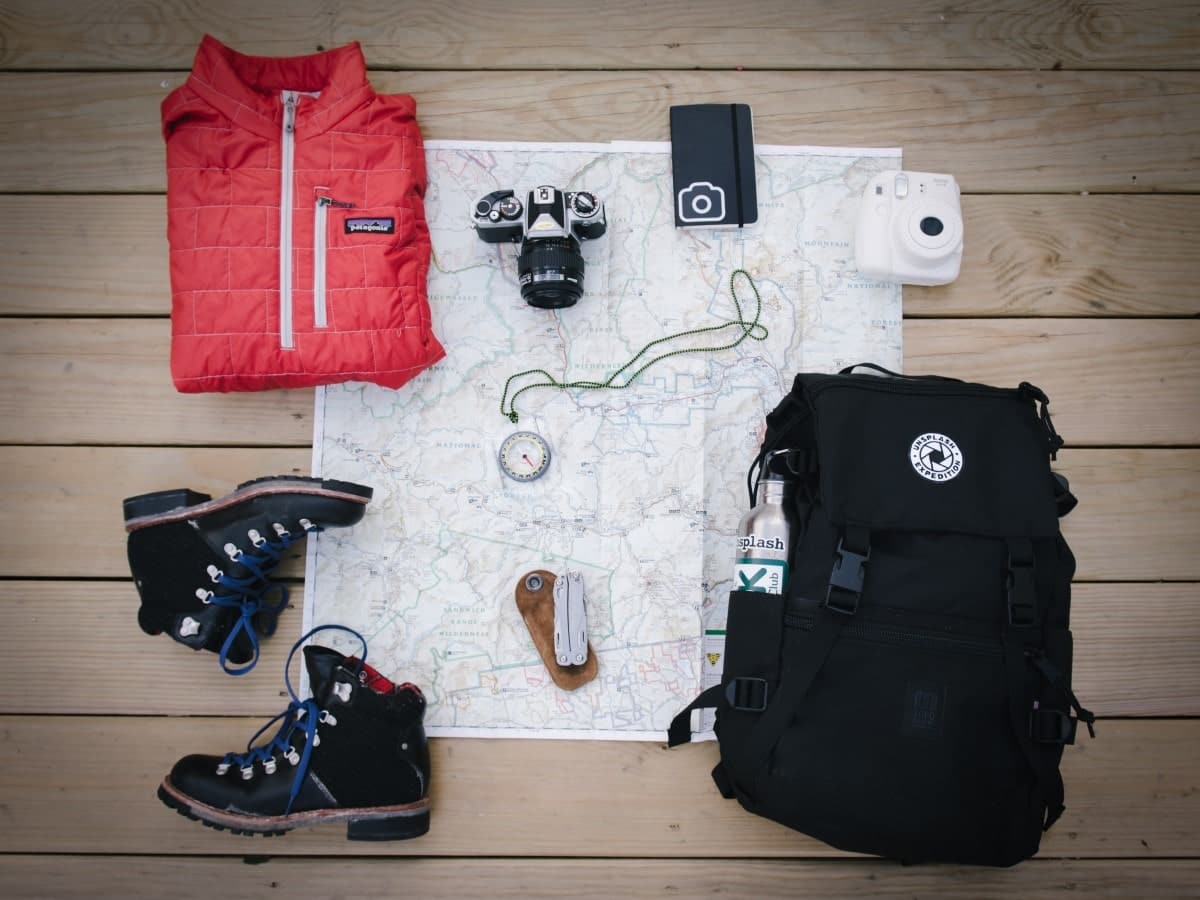
Essential Packing List for Scotland
Waterproof shoes or boots
Although most visitors will want to get out into the Highlands as much as possible, Scotland’s weather can sometimes make this tricky. We experience a rather sodden 1500mm of rain per year on average and it’s not unknown for it to rain non-stop for 2-3 days at a time.
What’s more, winter temperatures rarely rise above 5°C, so this rainwater sticks around for ages. Like everything else on this list, the best footwear depends on when and where you’ll be travelling, but you’ll cover most situations with two types of shoes.
The first is a good pair of waterproof hiking boots. These are perfect for traipsing around the Highlands throughout the year, as even in summer you’ll inevitably find yourself crossing burns (streams), boggy ground, and rocky mountain slopes.
The second is lightweight, semi-open walking shoes. These can be worn without socks in the sea as they have drainage holes, and they can also be used as normal walking shoes when worn with socks. They can also save weight by doubling up as gym shoes, and if you get a semi-fashionable pair, they won’t look out of place when walking around the city.
Walking Socks
Not all socks are created equally, and when it comes to walking in Scotland you’ll save yourself from untold misery by adding walking socks to your kit list. If you intend on setting out on any lengthy walks, please do not think you’ll get by with a standard pair of socks.
Walking socks are specifically designed to reduce heat by allowing air to pass through the material, they have anti-blister padding on the sole and heel, and the toe seams are designed not to rub on bare skin. In addition, walking socks are made from blended materials that wick away sweat and the premium ones have a multi-zone build where different areas of the sock have different weights of cloth.
Walking socks also help to prevent blisters when layers of skin become separated due to friction which then leads to a painful fluid-filled lump. If the blister bursts it can become infected or at the very least be so painful you’ll have to cut your walking holiday short.
I advise getting two different types of socks for each shoe style – long socks to cover the neck of boots and low-cut socks to wear with walking shoes and shorts.
Compeed
Following on from the above, if you do end up with blisters on your feet, the best treatment is to cover them with Compeed plasters. These plasters protect the blister’s sterile fluid bubble and give protection to the exposed raw skin of already-popped blisters. Unlike standard plasters, Compeed plasters have padding, they’re big enough to fully cover the blister, and they will stick to the foot even when it’s sweaty.
I created a guide about blister prevention treatments that tells you everything you need to know, but if you don’t have time to read it, I seriously suggest you just spend a few quid on a pack of Compeed plasters before you travel.
- INSTANT PAIN RELIEF: deep cushioning to relieve pressure and prevent painful rubbing.
- FAST HEALING: hydrocolloid active gel technology creates an optimal healing environment for foot blisters
- STAYS IN PLACE: adhesive, tapered edges so Compeed flexes with movement and won't rub off
- WATERPROOF, BREATHABLE & DISCREET: keeps natural moisture in and germs out, with translucent edges to help blend to the skin
- NEW INDIVIDUALLY WRAPPED PLASTERS: makes it easy to take them with you. Fits perfectly in your pocket, wallet or phone case
Hiking Trousers and Shorts
Hiking trousers are an essential item of clothing if you’re sightseeing anywhere outside the city. As the name so subtly suggests, these trousers are designed for walking, though many premium brands won’t look out of place if worn on city day trips.
What sets hiking trousers apart is their combination of materials which are designed to protect skin from UV rays, provide abrasion resistance when clambering over rocks and boulders (unavoidable when Munro bagging), are resistant to water, and allow cooling air to flow around the floppy unmentionable bits.
Do yourself a favour and skip the cheapo budget brands as they’ll likely fall apart after a few uses and will end up being a false economy. Instead, stick to big-name brands like Rab, North Face or my personal favourite, Berghaus.
There are two styles to look for when it comes to walking trousers – straight-leg or convertible. Straight legs are your basic trousers with, erm… straight legs, and convertible trousers have zips around the knees which allow the bottom sections to be removed, instantly turning them into shorts.
Personally, I prefer convertible trousers as their dual use comes in handy when the temperature changes or when entering an area with horrible, bitey midges. Straight-leg trousers are more fashionable as they don’t have a big zip midway up the leg and the material tends to be thicker, which makes them preferable for winter walks.
Summer hiking, meanwhile, is best done in a pair of hiking shorts which have lots of pockets as you’ll need somewhere to keep your gadgets when not wearing a jacket.
I’ve tried loads of brands but I have to give a big shout-out to KUHL shorts which have a UPF 50 rating, are ultra-durable, and are one of the few brands that feature zipped pockets. You’ll see these shorts in greater detail in his article: The Best Hiking Shorts to Wear in Scotland.
Quick-Dry Shirt
As an outdoor-centric country, you’ll find the majority of visitors that travel here spend a good deal of their time walking through Scotland’s beautiful landscapes. That’s all well and good, but in the height of summer the temperature can creep up towards 30°C (86°F) which means unprepared hillwalkers can find themselves overheating and quickly becoming drenched in sweat.
One of the best ways to combat sweaty armpits is to wear a T-shirt or base layer that’s designed to wick away moisture. Although plain cotton shirts are comfy, they’re not very good at drying out, as anyone who’s walked indoors wearing a damp shirt will already know.
A far better solution is to wear 100% polyester shirts, which are almost as soft as cotton but dry out much, much quicker. They’re also completely wrinkle-free, so you can scrunch them up in the bottom of a backpack without worrying about creases, and they’re great at allowing cool air to flow through the fibres.
There are a couple of negatives, though. Because polyester shirts are so breathable, they offer next to no protection from the wind, and they’re notorious for getting pulled threads when machine-washed.
As a top tip, you might consider checking out long-sleeved polyester shirts as well. These aren’t going to win any awards for style but I highly recommend them for summer hikes as the arms can be rolled down in the morning and evening when midges come out in force.
Waterproof Jacket
If you’re wondering what to wear in Scotland in winter, let me just say that choosing the right waterproof jacket can make or break your visit. The weather in Scotland is renowned for being changeable and while extreme temperatures are rare, intermittent rainy days are commonplace.
If you’re going to spend most of your time in a city it’s not too much of a concern as you can always pop into a shop or a cafe to escape a soaking, but in the Highlands (which is one of the wettest places in Europe) there’s rarely anywhere to hide.
One additional thing that needs mentioning is that the west coast of Scotland is one of the windiest places in Europe due to its position against the Atlantic, especially towards the northwest where there are an average of 30 days with gale force winds each year. With those two points in mind, if you’re heading into the Highlands and intend to walk into the wilderness, it’s highly recommended that you purchase the best waterproof jacket you can afford.
Ideally, the jacket will have a removable insulating inner layer that can be worn on its own as conditions dictate and an outer layer that’s designed to be windproof as well as rainproof. Look for features such as Gore-Tex, which is wind- and water-resistant while also being breathable, and make sure the jacket has air vents to allow built-up heat to escape.
With regards to water resistance, this is usually indicated as the hydrostatic rating which is in mm and shows how much water it can repel before the material starts to soak through. Anything under 5,000mm will only withstand light showers so look for 10,000mm as a minimum and ideally 20,000mm which will withstand prolonged use in heavy downpours.
Breathability is another consideration because if you get too hot you’ll sweat and end up feeling uncomfortable as well as lose precious water. The standard measurement for breathability is g/m2 and most consumer outdoor jackets range anywhere between 5,000 and 15,000g/m2.
The lower end is ok for walking around a city but if you’re going to head out on long walks or even bag a Munro or two, 15,000g/m2 will be the best option. As far as brands go, I prefer Rab, North Face, and Berghaus. I’d rate Rab as having the best outdoor performance, and Berghaus and North Face as being a little bit more stylish and practical.
Hat & gloves
While the old wives tale that you lose most of your heat through your head is a fallacy (you actually only lose around 10% from your noggin), a hat is still a recommended item to pack in your bag. Admittedly, most tourists will only visit Scotland in the summer when a hat is unnecessary, but for anyone touring the country outside of the peak season, I highly recommend taking a hat with you.
The best hats can be pulled down so they cover your ears, which stops the cold wind from blowing into them and causing earache, which is why I like to wear bog-standard beanie-style running hats. Scotland can certainly get cold, but it’s rarely so cold that you’ll need a full-face hat, and at a push, the most you’ll need in addition to a beanie hat is a decent scarf.
Gloves are another ‘handy’ addition to your cold-weather gear and I’ve finally settled on fingerless gloves after years of struggling to pull woollen mitts on and off every time I want to check my phone or operate my camera.
When choosing gloves, make sure they have Thinsulate weaved into them which is a thin layer of insulation that traps body heat while allowing moisture to escape. Any pair will do but I have a cheapo £5 pair from Amazon that have lasted around 3 years now and are still going strong.
Gear
Lightweight Backpack
As you read this article you’ll soon realise there are a ton of things to include in a packing list for a visit to Scotland, which is why I’ve included a lightweight backpack to carry it all. Keys, wallet, phone, water bottle, Haribo – essential items that all fit nicely into a backpack and leave pockets free for hands and sticks of chewing gum.
Unless you’re going on a long-distance walk you’ll be able to get by with a budget backpack while sightseeing, but you might consider investing in a more expensive hiking pack if you intend to follow trails like the West Highland Way.
I trudge all over the place in Scotland and have two types of bags that are invaluable for day trips and visits to tourist attractions.
The first is a small, lightweight daypack with zipped pockets. These bags don’t weigh much and are small enough to be barely noticeable when walking about, yet they’re big enough to hold water bottles, sandwiches, binoculars, and other sightseeing essentials. The zips add a little protection when used in the city, and there are additional pockets for things like tissues and midge repellent.
The other type of bag I recommend is a foldable fabric bag, which packs away into a tiny package not much bigger than a wallet. That means it can sit in a jacket pocket without being noticed and can then be unpacked whenever the need arises.
Suddenly decide to visit another attraction while out on the road? Grab a sarnie and a bottle of water, throw it in the bag, and off you go. The very fact that I always have a foldable backpack with me means it’s by far my most-used item of travel gear.
Drybag
You don’t need a dry bag as such, but believe me, there’s a good chance you’ll wish you had one at some point while touring Scotland. Dry bags are cylindrical bags made from nylon or some other waterproof plastic with a rollable top. When the top is rolled down it’s secured in place with a plastic clip which makes it virtually waterproof, and most either have carabiners to attach to a belt or a built-in shoulder strap.
The reason why I say there’s a good chance you’ll need one in Scotland is that as a tourist, there’s a high probability you’ll be near water at some point either on a boat trip, on a beach or just in heavy rain.
Most bags claim water resistance but dry bags offer waterproofing – a big deal when carrying binoculars, a camera and a £1,000+ iPhone. What I do is keep a small dry bag rolled up in my backpack and shove anything expensive inside it when the heavens open.
The alternative is to cover your backpack with a waterproof cover but those things never fit right and always seem to get blown off in a strong wind. Get yourself a dry bag and never worry about H2O again.
Binoculars
I wrote a guide about binoculars which covers how to use them and what features to look for but I’ll summarise it by saying – you get what you pay for.
If you don’t yet have a decent pair of binoculars and only want a pair in case you happen to see a wild animal or point of interest while travelling then you may as well get a well-reviewed cheapo pair off Amazon. Cheap ones will have crappy optics but they’ll enable you to see further than your naked eyes will allow, and if you don’t use them or lose them it’s not much of an expense.
If you’re in any way serious about binoculars though, try to get the most expensive ones you can afford.
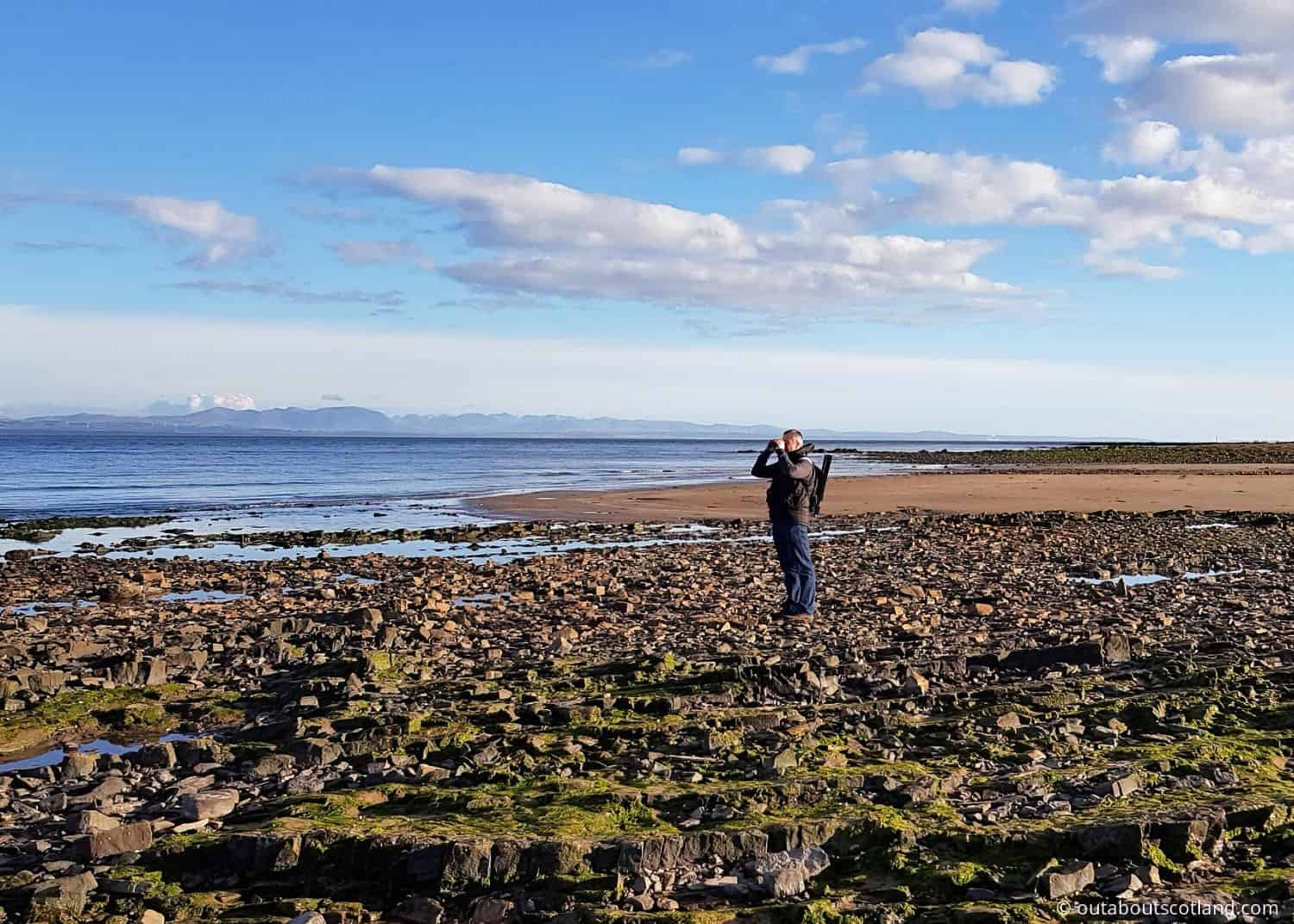
Premium binoculars from the likes of Canon, Olympus, and Pentax usually have nitrogen-filled lenses that prevent fogging and glass that prevents purple fringing around high-contrast objects. They also have a degree of water resistance and will be able to withstand being knocked about at the bottom of a bag.
I have two pairs. A cheap pair that cost around £20 on Amazon and another pair that cost almost £500. The cheap binos are always in my backpack as they’re small and light so they’re always available if I need them.
My expensive Canon’s, on the other hand, are only taken out when I know I’ll need them, but the optics are so far ahead of the cheap pair it’s night and day. The reason they cost so much is they have a gyro inside which smooths out all movements – an essential feature when looking far into the distance. It’s a lot of money but then the return on investment is more than worth it.
Battery Pack
With the ever-increasing number of gadgets that tourists take with them on holiday, there has been a rapid increase in the advance of portable power packs. Also known as portable chargers and power banks, they’re basically rechargeable high-capacity batteries that have outlet ports that can connect to mobile phones, cameras, smartwatches and anything else that uses low-voltage electricity.
You may think you don’t need one of these devices, but if you’re going to head into the Highlands, you could end up spending 2 or 3 days without going anywhere near a power socket. That means your phone will be out of juice before you know it, which could be catastrophic if your mobile device also doubles up as a GPS.
I’ve gone through a tonne of these things over the years, so I know by now which features to look for on a trip around Scotland, which begins with the amount of power it stores.
You want as much power as possible, so 10,000mAh should be the bare minimum for a camping trip. That will give your phone two full charges from empty so if you fully charge your phone before leaving home you’ll have around three full days of use.
20,000mAh is even better as it will give you twice the charges, but it will also be twice as heavy (expect a high-end charger to weigh around 350 grams) so decide on how long your outdoor trip will be before splashing out on a new power pack.
With regards to ports, USB C is always handy with newer devices but if you have an old Micro USB cable you can get Micro USB to USB C adaptors for a couple of pounds from Amazon. Brand-wise, I stick with Anker, as the quality of their gear is great and their customer service is second to none. Alternative brands that are decent are Mophie and Belkin.
Water Bottle
Scotland’s (and indeed the UK’s) water is some of the cleanest and safest to drink in the world so there’s no need to spend money on a wasteful bottle of spring water. As well as being bad for the environment, bottled water is frequently proven to be less pure than domestic tap water, and it’s significantly more expensive, at around 2,000 times the price.
Recent laws in Scotland mean that all licenced premises are legally obliged to provide free tap water fit for drinking upon request, so you’ll have no problem popping into a pub or restaurant and asking them to fill up your water bottle as you explore Scotland. You can also fill directly from domestic mains water taps and, if it’s directly from the mains supply, take water from bathroom taps.
As far as water bottle brands go, pretty much any will do, but there are two that I have that I love to bits.
The first is a big chunky stainless steel bottle from Amazon that I’m convinced is indestructible. This thing is a wee bit heavy but it holds a mammoth 2.2 litres and comes with a screw top lid and a lid with a straw. I’ve dropped it on rocks countless times, dropped it in the sea, trodden on it, and had the dog chew on it. It’s a bit battered after all that abuse, but it’s still going strong and will probably last me another 5 years.
The second bottle is nowhere near as strong, but it’s lighter and has a built-in water filter that filters out chlorine and other pollutants. Although Scottish tap water is safe to drink, you’ll find that some of the smaller islands frequently have peat-tainted water, which has an odd flavour.
My Brita water filter bottle removes all the impurities from the peat and produces water that’s crystal clear
In fact, I’ve filtered water from Highland streams many times with that bottle and never had a hint of an upset stomach afterwards. Top tip – check upstream for dead animals before drawing unfiltered water and do not take water that’s lying still in pools.
Sunscreen
If you’re looking at this page in disbelief that sunscreen has been included in a Scotland packing list, let me tell you as a well-travelled hillwalker that this is one item that’s an absolute necessity. Yes, we get a lot of rainy days here in Scotland, but despite what you may have heard we also get a lot of sunny days too.
Due to its high latitude, here in Scotland we enjoy 1-3 hours more daylight on average than in England, so if you’re heading out on an all-day hike there’s a good chance you’ll be exposed to more harmful UV rays than you were expecting.
This is especially true in places like the western islands which often have their own micro-climates such as the Isle of Tiree (AKA ‘the Hawaii of the North’) which is one of the sunniest places in Britain with over 1,500 hours of sunshine annually.
Ultraviolet radiation is categorised as UVA, UVB, and UVC, so when looking for a sunscreen, it’s important to get one that blocks all three. While UVC is the most hazardous, the ozone layer almost completely blocks it, whereas UVB is weaker but is the wavelength that causes sunburn and the most damage to the skin’s outer layers.
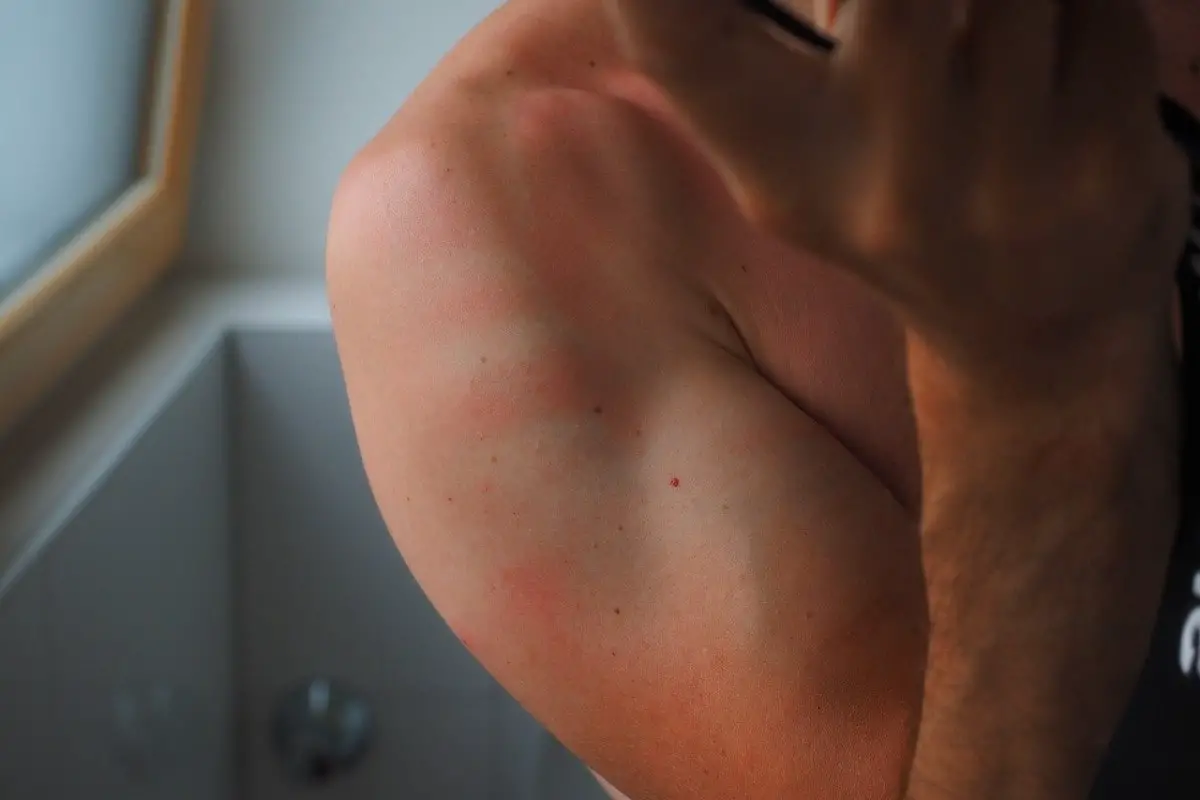
Skin cancer is a horrible disease and it can be drastically reduced by using sunscreen so I suggest forgetting about a tan and buying the highest-rated sunscreen you can find.
Sunscreen strength is rated in SPF, otherwise known as Sun Protection Factor, which indicates how long skin takes to redden with the product compared to bare skin without it. Higher ratings are generally SPF 30, which allows about 3% of UVB rays to hit your skin, while SPF 50 allows 2% of UVB through. The difference between 2% and 3% may seem small, but consider that SPF 30 allows 50% more UVB radiation onto your skin than SPF 50.
Midge Repellent
Another reason to visit Scotland is to see the varied wildlife that makes its home on these shores. Wildcats, Highland cows, puffins and red squirrels are all native to Scotland so nature enthusiasts will love a trip to this country. The only downside is that Scotland is also home to another creature that can be considered a pest more than anything else. That creature just happens to be the midge.
Anyone who has spent time around these insects will know just how much of a pain they can be as their bites are itchy and they come in such large swarms that it’s almost impossible to avoid them. Fortunately, a healthy dose of midge repellent should be enough to keep them away during your trip, but with so many variants on the market, it’s difficult to know which one to choose.
Midges can have such an effect on a tour of Scotland that I created two articles about them, both of which I recommend reading before setting foot in the great outdoors.
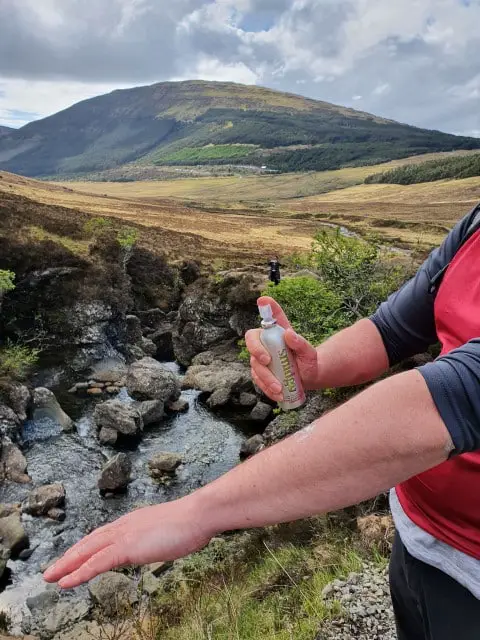
The first is Midges in Scotland which covers what they are, where they live, and how to avoid them. The second article is The Best Midge Repellents which covers the top (you guessed it) midge repellents to use in Scotland.
If you don’t have time to read those articles, I’ll cut to the chase and tell you that midges are found all over the Highlands and West Coast islands from May to September, mostly in the morning and evening and predominantly anywhere that’s wet or boggy.
There are a few tricks to avoid getting bitten, such as covering yourself in Avon Skin So Soft, but I swear by Smidge, which is a chemical-free lotion that lasts most of the day and is water-resistant. Smidge is only £7-8 a bottle, so you should get at least two if you’re travelling anywhere on the west coast, but if you’re sleeping overnight in a tent, I also recommend lighting a midge candle or using a Thermacell butane midge protector.
If you take away nothing else from this article, make sure you add midge repellent to your packing list for Scotland in summer.
Walking guide & map
In today’s age, physical walking maps are a rare sight because most people have access to Google Maps on their phones, meaning they can quickly find their location with a quick swipe of the screen. However, this feature requires a solid internet connection, and you won’t receive one of those when wandering around most of the Highlands.
One of the benefits of a visit to Scotland is its vast landscapes which are amongst the lowest populated areas in Europe. Unfortunately, it’s quite easy to get lost in these places if you’re new to the area so a map and a compass are essential to keep as a backup.
As far as paper maps go, the only ones worth considering are Ordnance Survey Maps which blow all others out of the water when it comes to detail and accuracy. OS Maps have been going since 1801 so they know a thing or two about what it takes to make a good map, and to be honest, they’ve perfected them.

When you head to the OS Maps store you’ll find two types – Landranger and Explorer – which I’ll explain below. I use both but tend to prefer Landranger as they cover a much larger area than Explorer maps but are still detailed enough for casual walks.
OS Explorer Maps: Best for walking, mountain biking, and finding footpaths. 1:25,000 scale (4cm = 1km in real world). Buy OS Explorer maps direct from Ordnance Survey.
OS Landranger Maps: Best for road cycling, touring by car, and finding attractions. 1:50 000 scale (2 cm = 1 km in real world). Buy OS Landranger maps direct from Ordnance Survey.
An alternative to paper maps is a dedicated GPS device with built-in maps. While you could use your phone with an OS Maps subscription (where you own every single OS Map for less than £30 a year) I now have a dedicated GPS unit and never use my phone as a GPS anymore.
The reason is that phones are hopeless in sunlight as you can barely make out anything on the screen and the battery life is woefully inadequate for long hikes. Plus, dedicated buttons will always be better than a glossy screen in the rain.
Something like a Garmin eTrex lasts a full day of continued use, is waterproof, and can have walking routes uploaded to it. If a GPS device floats your boat I recommend heading to the OS Maps store before Amazon as they often have 20% sales on their products.
Other Essentials
Money
Anyone who has visited a new country before will know how important it is to travel with the right currency. If you don’t have the correct legal tender you’ll be refused essential goods and services, so get this sorted before you leave.
Note that Scotland uses the pound sterling which is the same currency as the rest of the UK. This means that you’ll be dealing with £5, £10, £20, and £50 notes during your trip. However, Scotland does have some interesting traditions.
In terms of day-to-day use, there are no issues with using either Scottish or English notes in Scotland because banks and shops will always accept them, whereas some English shops will reject Scottish notes purely because the trader receiving them is unsure of their authenticity.
The reason for this confusion is that Scotland has a few alternative designs for its bank notes, meaning they appear quite different from notes printed by the Bank of England.
While Scottish notes are rare in most of England and Wales they are the predominant currency in circulation in Scotland, though most Scottish traders also handle Bank of England notes due to the vast number in circulation.
To cut a long story short, if you’re visiting Scotland from overseas and plan on travelling around England as well as Scotland, you should consider obtaining your banknotes in England. If you’re only going to spend your time in Scotland, then don’t worry about where your banknotes come from.
The whole English/Scottish banknotes drama has a long history behind it that goes back hundreds of years so if you’d like to know more about it take a look at this article: Can You Use English Pounds in Scotland?
Insurance

For the most part, Scotland is a relatively risk-free country to visit. However, it’s always sensible to travel with the right insurance. Scotland is part of the UK which means that all drivers must obey its road laws. This, in turn, means ensuring that you arrange to have car insurance if you hire a car anywhere in Britain.
It shouldn’t cost much for a 1-2 week trip, and most car rental companies will arrange insurance for you. If you’d rather sort out your own insurance, though, you might consider visiting Quotezone.co.uk for car insurance comparisons or click here to get an immediate quote.
In addition to car insurance, you should take out a travel insurance policy if you’re visiting from overseas. Make sure you don’t skimp on features and as a minimum make sure the policy includes repatriation to your home country if you become very ill.
Also, if you’re travelling to Scotland to take part in sports such as golf or skiing, you might consider taking out golf cover, which includes personal liability insurance, and ski cover, which includes piste closure cover.
In those two instances, I’d also include equipment damage cover and loss/theft of equipment cover unless you intend to hire everything when you get here. Sightseeing tourists, meanwhile, should add legal expenses cover, lost luggage cover, and trip interruption cover to their policies. These insurances are rather complex, but necessary, so I’ve created a separate guide that will explain everything you need to know: Do I Need Travel Insurance to Go to Scotland?
Frequently Asked Questions
Can I wear jeans in Scotland?
It’s perfectly acceptable to wear jeans in Scotland, but they are not suited to long camping trips as they have no ventilation and take a long time to dry out.
Jeans are ideal for walking around Scotland’s cities, and a smart pair is acceptable to wear in the evening. Wearing jeans in a restaurant in Scotland is fine, but most people will smarten up the look with a collared shirt.
What do you wear in Scotland to not look like a tourist?
Scottish people do not care what visitors look like so there’s no problem looking like a tourist wherever you go. However, you can blend in by keeping cameras out of sight and keeping voices low indoors.
The most important point to remember to not look like a tourist is DO NOT wear a cheap tartan kilt outfit. The majority of Scots only wear kilts to formal events such as weddings and these expensive kilts are a very long way from the cheap ones sold in gift shops.
Can you wear sneakers in Scotland?
Sneakers are ideal for sightseeing in Scottish cities in warm weather but they are not suitable footwear in the Highlands or anywhere in Scotland in winter.
This is because Scotland is one of the wettest countries in Europe and sneakers will soak through on a long sightseeing tour, plus the sole grips are insufficient for hill walking. Ideally, wear waterproof hiking boots or shoes for a winter visit to Scotland.
Do I need cash in Scotland?
Visitors do not need to take cash to Scotland as almost every retailer will accept card payments as well as payments via mobile devices. However, some small notes (£5, £10) will be handy with small vendors such as coffee shops in remote locations.
Note that cash is useful when taking a car to Scotland as many car parks only accept coins.


















